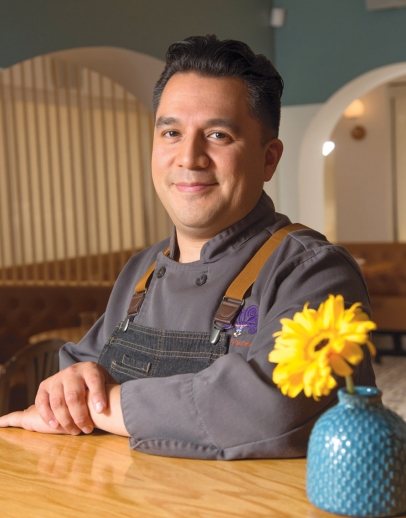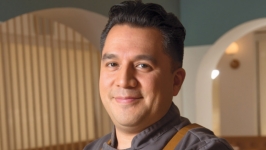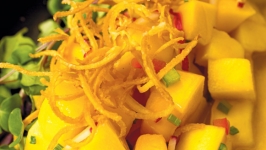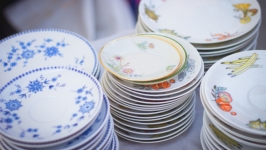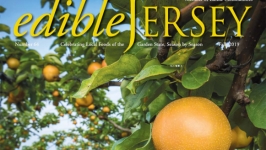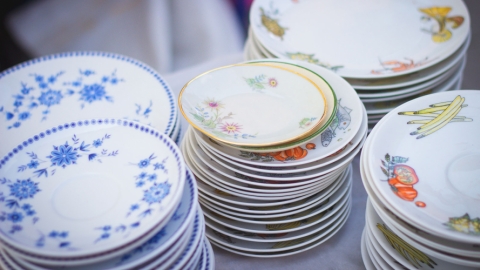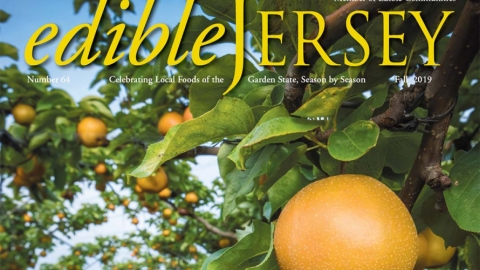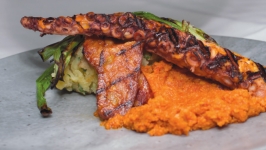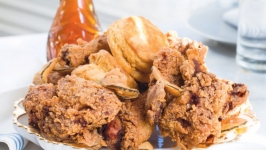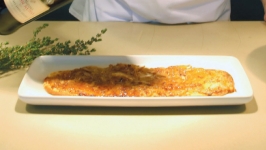SOMOS: PERUVIAN CEVICHE
CHEF: Juan Placencia
RESTAURANT: Somos
LOCATION: NORTH ARLINGTON
A lifetime spent immersed in the flavors and culture of Peruvian food has left Juan Placencia unable to single out a specific dish that transports him back to childhood. “I was spoiled in having the variety,” says Placencia, the owner and executive chef of SOMOS in North Arlington and Costanera in Montclair. “If I were to put a name on it, it wouldn’t be a dish, it would be the cuisine. I love it, I live it, and I breathe it.”
When asked to name an iconic Peruvian dish, however, his choice is immediate and unconflicted: “Ceviche is the staple of Peruvian food. It’s definitely huge in Peru and they eat ceviche pretty much anywhere and everywhere.”
The son and grandson of Peruvian restaurateurs, Placencia has seen ceviche evolve from the traditional versions that his grandmother made to seasonal variations he learned while working at Jean-Georges and other restaurants in New York to the present day when even his vegetarian customers have the opportunity to sample his ’personal perspective on ceviche.
In Peru, ceviche was traditionally prepared in large batches, marinated for a minimum of 45 minutes, and consumed only during the day. “That whole ideology has changed. Today the process is much, much different,” Placencia says. “Ceviche is prepared to order. It is not prepared in batches. And you can have it at any time. You can have it during the day. You can have ceviche for dinner. But your older generation is going to stick with what they know and it’s not even a consideration for them to eat ceviche once the sun sets.”
Chef Juan Placencia is excited by the playful way chefs are exploring nontraditional versions of ceviche. “There is really no wrong answer to ceviche.”
Ceviche begins with the freshest possible fish. While Placencia doesn’t have a favorite, he recommends staying away from fatty fish, such as bluefish and salmon. It’s important that the fish be very well cleaned to remove all scales, skin, silvery-white film, and bones. The fish is then cut in a medium dice using a sharp knife—not a serrated knife—and seasoned with salt, garlic, and white or black pepper. The salt begins the process of breaking down the fish, which causes it to start releasing water.
Next come the Peruvian peppers, which are a major flavoring component of ceviche. Because Peru’s unique high-elevation growing conditions give their peppers a particular flavor, Placencia recommends using imported peppers. “They’ve tried to find regions—not just in the United States, but all over the Americas and in other parts of the world—where they’ve tried to cultivate certain varietals,” Placencia says. “They’ve brought the seeds over. They even brought over young plantings. They will grow and you can harvest them, but the colors are different or the flavors are totally off.”
Peruvian peppers are generally available in the U.S. in several forms: flash frozen, preserved in brine, dried, and in paste form. For this recipe, Placencia suggests using aji amarillo, an orangeish-yellow pepper with citrusy notes, or aji rocoto, which is bright red and has more heat and pungency. (If these peppers are not available, you can use more common peppers, such as Thai chili, habanero, jalapeño, or poblano peppers.) To get just the pure essence of the pepper and avoid unwanted added ingredients, he creates a fresh purée by removing the stems and seeds from frozen peppers and processing them in a blender with a small amount of water until smooth.
The final, and key, ingredient is lime juice, which completes the breakdown process that was started by the salt. The ingredients are tossed together and left to sit for a few minutes.
“As [the fish] marinates in the lime, the proteins are breaking down. The albumin starts seeping into that lime juice and it turns a milky white,” Placencia says. “The sauce that is created from that process is called leche de tigre—tiger’s milk.” The leche de tigre adds texture to the ceviche. It also cuts the sharp bite of the lime juice, yielding a dish that is bright but without intense acidity.
The final step is to taste and adjust the seasonings by asking yourself: Does it need more salt? Does it need more garlic? Does it need more Peruvian pepper?
Placencia is excited by the playful way chefs are exploring nontraditional versions of ceviche. The citrus base can vary with the seasons to include Meyer lemon, blood orange, pomelo, or whatever citrus looks best in the market. And the fruit and vegetable garnishes can be seasonal as well. “There is really no wrong answer to ceviche,” Placencia says. “It’s preference—what you like, what’s good now.”
As for perfecting the art of making flavorful, well-balanced ceviche, growing up in his family’s restaurant gave him plenty of opportunity to learn. “It’s just repetition and tasting,” Placencia says. “That’s all it is. It’s just tasting it, day in and day out. I had those opportunities with my family, just being in the restaurant.”
SOMOS
185 River Rd., North Arlington
201.621.0899
somosnj.com


